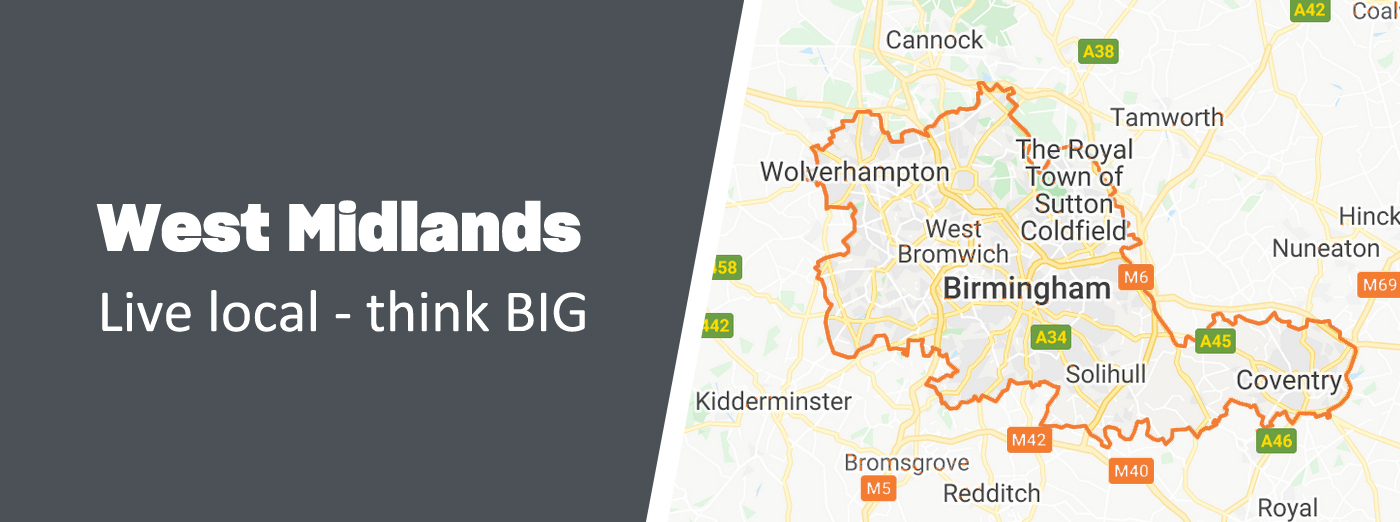
The Education Policy Institute today launched there newest report focused on access to high performing schools in England.
Widening access to high performing schools is crucial if the Government’s policy objective of improving social mobility is to be met. In this report, we analyse the density of good secondary school places across England, and compare the spread of good quality places in 2015 with that in 2010.
The report finds that:
- In both 2010 and 2015, around one-fifth of local neighbourhoods (as defined by Lower Super Output Areas) had no high performing secondary schools within reasonable travel distance of pupils. In these areas, pupils cannot easily access a place at a high performing school.
- In two local authority areas, there was no access at all to places at high performing secondary schools in both 2010 and 2015: these areas were Blackpool and Hartlepool.
- Access to high performing secondary schools has become more geographically unequal over the period 2010-2015, in spite of government policies aimed at improving school performance outside higher performing areas such as London.
- Access to high performing secondary schools is good in areas such as London and in parts of the South, but is poor in areas such as the North East, Yorkshire and the Humber, and parts of the Midlands.
- From 2010 to 2015, local authorities with consistently good access to high performing secondary schools saw the proportion of pupils gaining access to such schools rise from 49 per cent in 2010 to 58 per cent in 2015. Many of these are in London.
- But in local authorities with consistently low densities of high performing school places, the proportion of pupils gaining access to such places fell from just 6 per cent in 2010 to 5 per cent in 2015. All these areas were outside London and the South East – and included areas such as Blackpool, Hartlepool, Barnsley, Redcar and Cleveland, Knowsley, and Middlesborough.
- Another way of looking at the same challenge is to consider the local authorities with the highest and lowest increases in the density of high performing secondary school places, between 2010-2015. Of the 20 local authorities with the biggest increases, 16 were in London. In these areas the proportion of high performing places rose from 36 per cent to 60 per cent from 2010-2015. Of the 20 local authorities with the largest decreases in high performing places, none of these were in London. In these areas the proportion of high performing places fell from 31 per cent in 2010 to 20 per cent in 2015.
- The largest riser was Harrow. The biggest faller was Blackburn with Darwen.
Policy implications
There are large areas of the country in which parents and pupils currently have no access to a high performing secondary school. In particular, the North East has virtually no high performing secondary schools. Given the wide geographic variation in the density of high performing school places, the Government’s Opportunity Areas initiative seems a positive step towards addressing this challenge. However, as yet there is now evidence on whether this intervention will be effective and there is no Opportunity Area in the North East. There is a need to ensure that measures are in place to raise the quality of provision available to pupils in this region.
Next steps
Discover Youth Friendly Employers
 ABP Foods
ABP Foods
 Apprenticeships, graduate schemes and an AMAZING early careers academy in the world of sustainable food
EXPLORE
Apprenticeships, graduate schemes and an AMAZING early careers academy in the world of sustainable food
EXPLORE
 Careers in Eyecare
Careers in Eyecare
 From healthcare lab to high street fashion - you don't need a degree to open your eyes to eyecare careers
EXPLORE
From healthcare lab to high street fashion - you don't need a degree to open your eyes to eyecare careers
EXPLORE
 Aspiration Training
Aspiration Training
 Traineeships & Apprenticeships in childcare, dental nursing, teaching, health/social care, and business admin
EXPLORE
Traineeships & Apprenticeships in childcare, dental nursing, teaching, health/social care, and business admin
EXPLORE
 Careers in Racing
Careers in Racing
 Horse racing is a great career choice! British Racing is the 2nd largest spectator sport after football.
EXPLORE
Horse racing is a great career choice! British Racing is the 2nd largest spectator sport after football.
EXPLORE
 Catch22 Youth Services
Catch22 Youth Services
 Want to overcome barriers in life, whatever your background? Want employers to give you a chance? We can help.
EXPLORE
Want to overcome barriers in life, whatever your background? Want employers to give you a chance? We can help.
EXPLORE
 Coach Core Apprenticeships
Coach Core Apprenticeships
 See how Coach Core Apprenticeships get you into sport careers
EXPLORE
See how Coach Core Apprenticeships get you into sport careers
EXPLORE
 Coca-Cola EuroPacific
Coca-Cola EuroPacific
 Want to work for one of the most well-known brands in the world? They work hard to develop their young people!
EXPLORE
Want to work for one of the most well-known brands in the world? They work hard to develop their young people!
EXPLORE
 Environment Agency Careers
Environment Agency Careers
 Our work helps to protect and improve the environment to make it a better place for people and wildlife. Join us!
EXPLORE
Our work helps to protect and improve the environment to make it a better place for people and wildlife. Join us!
EXPLORE
 Essex Youth Service
Essex Youth Service
 Aged 13-25 and live in Essex? Get involved in fun activities, The Duke of Edinburgh's Award and online Plan B Traineeships.
EXPLORE
Aged 13-25 and live in Essex? Get involved in fun activities, The Duke of Edinburgh's Award and online Plan B Traineeships.
EXPLORE
 Generation: Free Skills Training
Generation: Free Skills Training
 Get FREE skills and careers training today! Generation gives you skills and connects you with employers to find a job fast.
EXPLORE
Get FREE skills and careers training today! Generation gives you skills and connects you with employers to find a job fast.
EXPLORE
 Get Into Teaching
Get Into Teaching
 You can get a teaching degree for FREE with apprenticeships!
EXPLORE
You can get a teaching degree for FREE with apprenticeships!
EXPLORE
 Heidelberg Materials
Heidelberg Materials
 Play to your strengths. Travel the world - if you want to. Work with people, money, sales, or technical skills!
EXPLORE
Play to your strengths. Travel the world - if you want to. Work with people, money, sales, or technical skills!
EXPLORE
 Haven
Haven
 Joining Haven is more than just a job. Our early careers are a breath of fresh air!
EXPLORE
Joining Haven is more than just a job. Our early careers are a breath of fresh air!
EXPLORE
 Historic England
Historic England
 Discover early careers in heritage for all backgrounds, skills and interests.
EXPLORE
Discover early careers in heritage for all backgrounds, skills and interests.
EXPLORE
 IHG Early Careers
IHG Early Careers
 Discover how you can grow your career in hospitality!
EXPLORE
Discover how you can grow your career in hospitality!
EXPLORE
 Working in local government
Working in local government
 Local government touches everyone's lives every day
EXPLORE
Local government touches everyone's lives every day
EXPLORE
 Martin Brower Careers
Martin Brower Careers
 Break into business, admin and supply careers with Martin Brower. Don't settle for the status quo.
EXPLORE
Break into business, admin and supply careers with Martin Brower. Don't settle for the status quo.
EXPLORE
 McDonald's Early Careers
McDonald's Early Careers
 You probably knew you can get McDonald's Apprenticeships. Did you know you can also study for a FREE Management Degree?
EXPLORE
You probably knew you can get McDonald's Apprenticeships. Did you know you can also study for a FREE Management Degree?
EXPLORE
 NCFE Vocational Qualifications
NCFE Vocational Qualifications
 Young people get amazing perks when they work for the NCFE, with apprenticeships and more. The training is great, too.
EXPLORE
Young people get amazing perks when they work for the NCFE, with apprenticeships and more. The training is great, too.
EXPLORE
 Pret Apprenticeships & Careers
Pret Apprenticeships & Careers
 When you apply for a Pret Apprenticeship or junior role, you’ll belong to a community of achievers. Get support on your own unique career journey!
EXPLORE
When you apply for a Pret Apprenticeship or junior role, you’ll belong to a community of achievers. Get support on your own unique career journey!
EXPLORE
 Prezzo Restaurant Careers
Prezzo Restaurant Careers
 Prezzo offers so many early careers, from cooking great food and giving great customer service to managing like a boss!
EXPLORE
Prezzo offers so many early careers, from cooking great food and giving great customer service to managing like a boss!
EXPLORE
 Red Carnation Hotels
Red Carnation Hotels
 Have fun at work with internships, degree apprenticeships and management schemes when you join Red Carnation Hotels.
EXPLORE
Have fun at work with internships, degree apprenticeships and management schemes when you join Red Carnation Hotels.
EXPLORE
 Royal Air Force
Royal Air Force
 There’s nothing like a career in the RAF, it’s not just a job but a way of living.
EXPLORE
There’s nothing like a career in the RAF, it’s not just a job but a way of living.
EXPLORE
 Severn Trent Careers
Severn Trent Careers
 Discover opportunities for apprentices, graduates and undergraduates in the office and beyond!
EXPLORE
Discover opportunities for apprentices, graduates and undergraduates in the office and beyond!
EXPLORE
 Sodexo
Sodexo
 Come and EXPLORE your career at Sodexo. See what amazing opportunities come about along the way.
EXPLORE
Come and EXPLORE your career at Sodexo. See what amazing opportunities come about along the way.
EXPLORE
 Surrey County Council Careers
Surrey County Council Careers
 Thinking about rewarding apprenticeships and early careers in a diverse environment? Fire up your career with SCC!
EXPLORE
Thinking about rewarding apprenticeships and early careers in a diverse environment? Fire up your career with SCC!
EXPLORE
 Taylor & Francis Early Careers
Taylor & Francis Early Careers
 Our international publishing company believes in doing things differently. You could be just what we need!
EXPLORE
Our international publishing company believes in doing things differently. You could be just what we need!
EXPLORE
 The British Library
The British Library
 Work experience, internships and apprenticeships with The British Library open up a WORLD of possibilities.
EXPLORE
Work experience, internships and apprenticeships with The British Library open up a WORLD of possibilities.
EXPLORE
 VHR Technical Recruitment
VHR Technical Recruitment
 The VHR talent academy can help you get into a successful technical recruitment career - with NO experience!
EXPLORE
The VHR talent academy can help you get into a successful technical recruitment career - with NO experience!
EXPLORE
Email us at info@youthemployment.org.uk or call 01536 513388.

Looking for help in your area?
Adult Education in the West Midlands

Aged 19+? Find adult education, courses and training in the West Midlands.
Adult education






